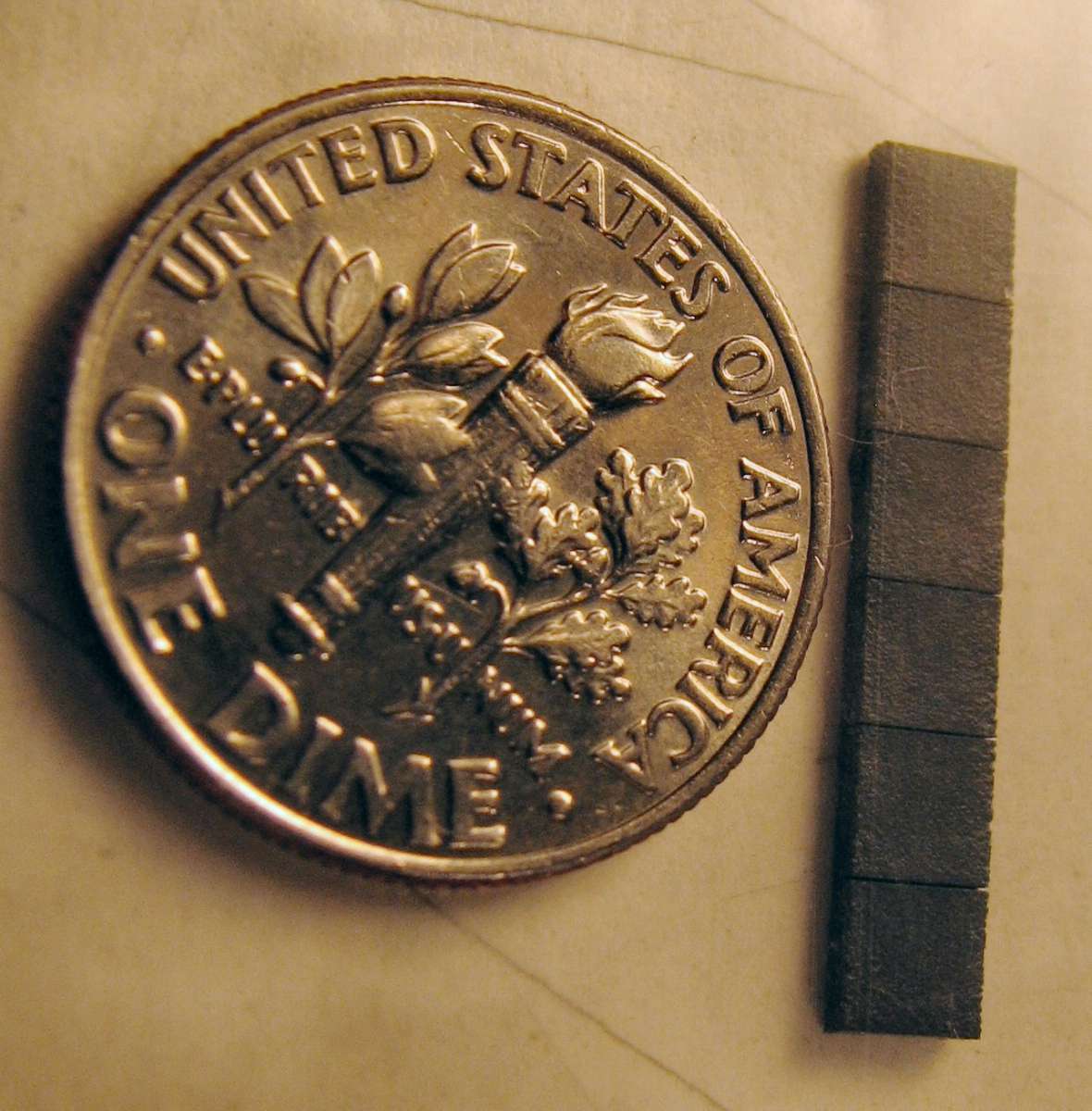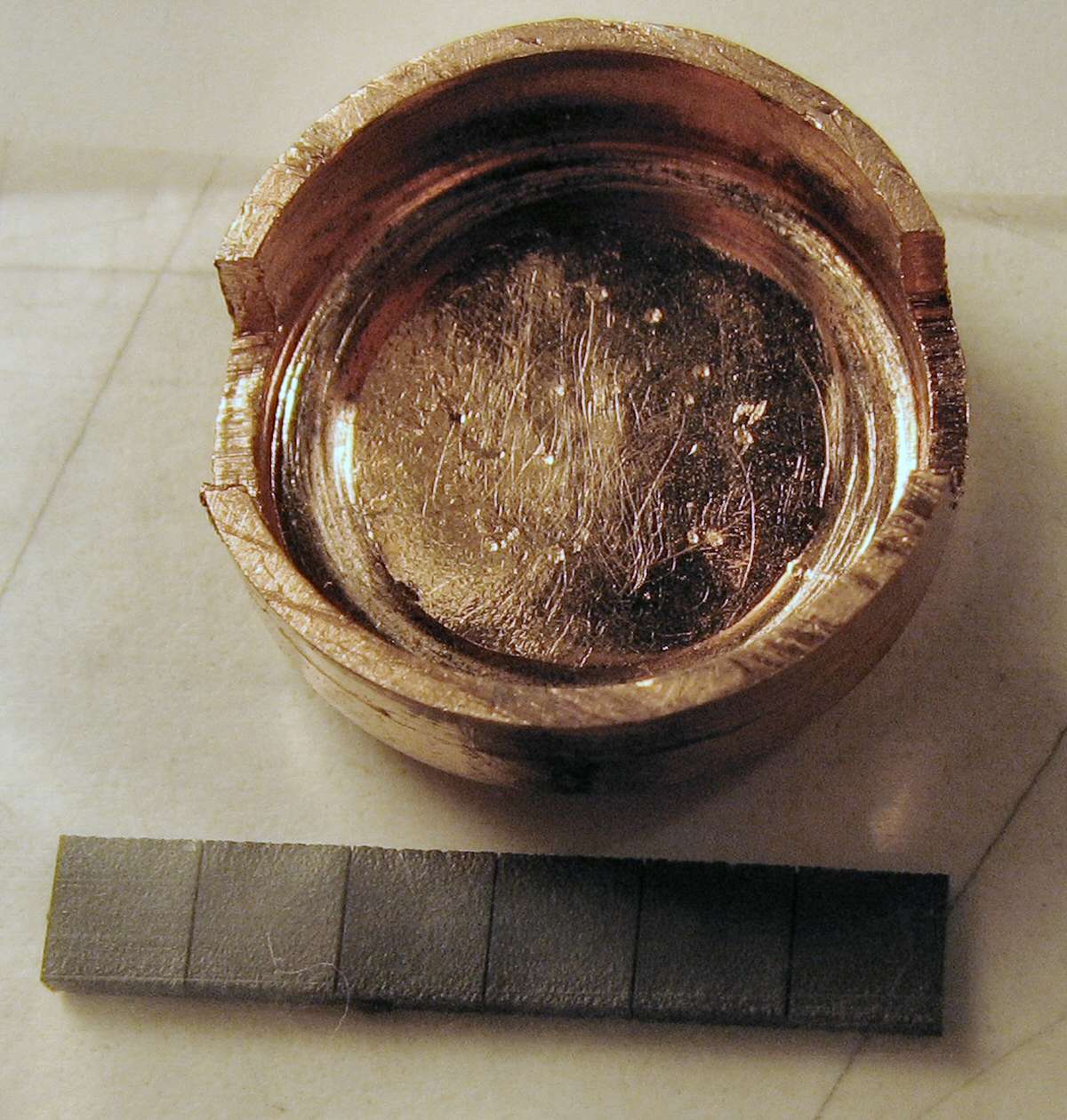Should have known I couldn't leave this thing rest...
I went ahead and finished the switch I was working on, just to see if it would work. Here's my photos of it and my summary, for what it's worth.
I soldered a short ring of copper tube into a copper cap and drilled out the hole for the bolt. The easiest way for me to solder like that (without moving the ring during soldering), is to wrap a piece of solder around the ring and put it all down in the cap. Heat the underside of the cap, and it solders itself.

I epoxied the bolt head into the black knob, after pressing it into the knob. Then I filed a "C" clip groove around the bolt.
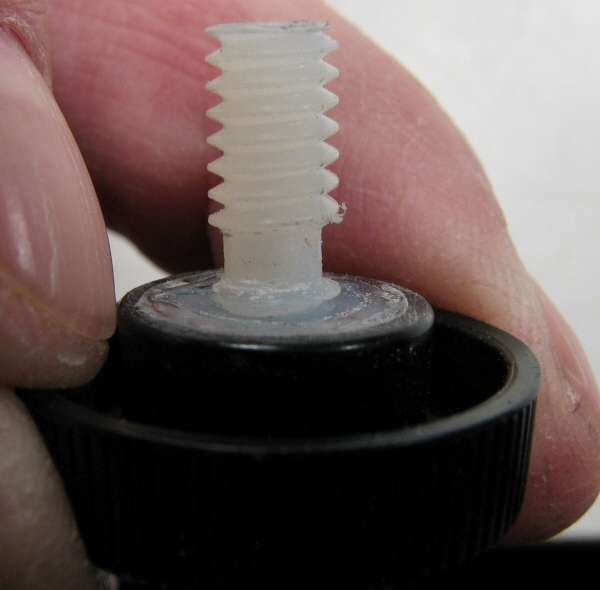
Here's the bottom cap of the switch. I chose a socket close to the ID of the cap and used it to flaten the end of the cap as well as crushing the outer ID, so thare would be a small pedestal of sorts. The slots are cut so that the inner contact piece, that moves up and down in the slot, will actually contact the cap if the QTC is crushed enough, making a 100% direct contact, to make a "high setting"

Here's the homemade "C" ring, to hold the bolt and keep it in place.

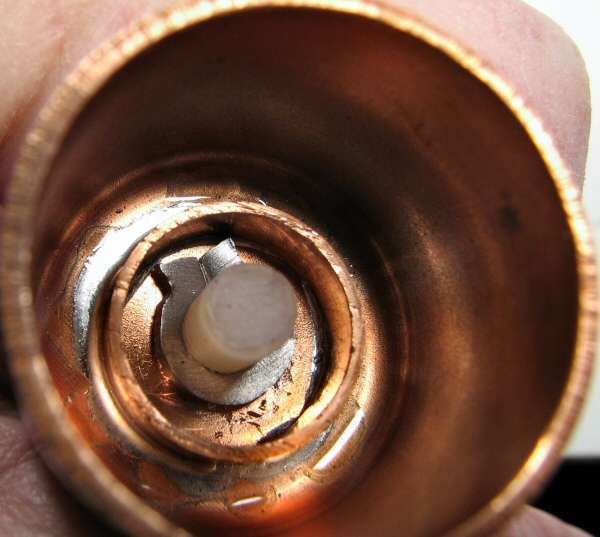
Here's the piece of PVC that forms the insulated piece of the switch body.
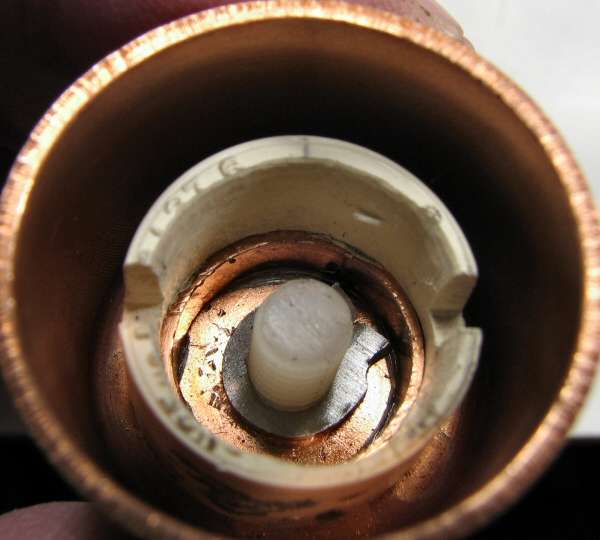
Here's the QTC material in the end cap. I used 4 pieces of it. I ran a very fine hairline of epoxy in the center, then set the QTC in and ran a line on two edges, just to hold the QTC in place. I just used a tiny bit of Epoxy.
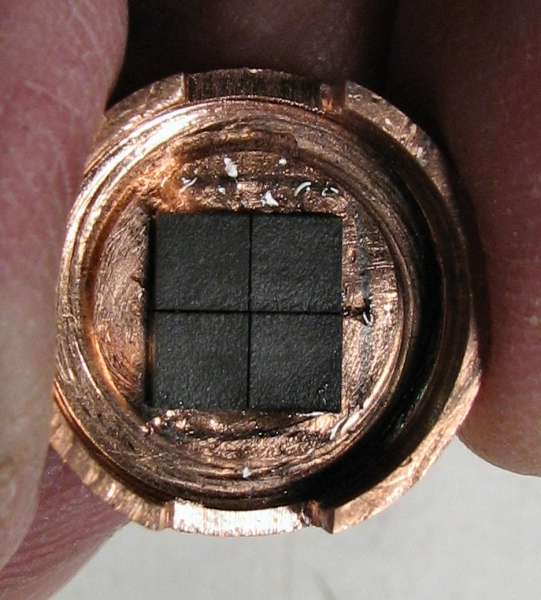
Here's the switch completed.

Here's the broken switch. My thoughts are written below.
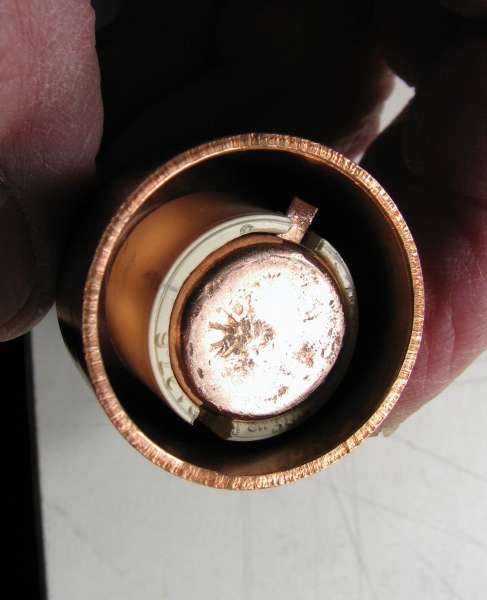
As I stated eariler, in a previous post, the QTC needs quite a bit of pressure to compress. What I found with this switch confirms that it would need at least 10 to 15 foot pounds of force to compress the QTC to form a 100% continuity contact.
The switch gave way after 3 tries of using it. The force made the PVC come off the upper copper ring.
I did get to use my meter and check ohms as I used the switch. Before turning the knob to make the contacts touch, I had a completely open circuit. As the top contact came down to touch the QTC, the meter jumped quite suddenly and each sucessive motion to compress it was totally erratic on the meter.
I did all of this with very fine adjustments of the knob and then reading the meter for a short time to see if the output was stable after each movement. The meter jumps all over the place once the contacts start compressing the QTC. Of course that can be from the switch slowly coming apart, but I was in a position to watch the switch body and I think the PVC (which was epoxied). gave out all at once, but maybe not. Even with just slight pressure on the QTC, the meter was all over the place, but my short lived test may be nothing but smoke and mirrors.
Even with no movement in the switch, the resistance jumps all over, once the QTC starts to compress. I also was able to prove out that I can compress the QTC to a certain point and then if the contacts touch each other at the end of the stroke, the circuit was 100% complete, so that's the way to have a defined High setting. Also I found that by not letting the contacts twist on the QTC, when compressing the QTC, it stayed in place like it should without damage to it. (again, the short lived test probably means nothing).
So, I'm through with QTC. If I had a lathe and a drill press, I would be making QTC switches. What I see is that a very small switch can be made. Much smaller than mine. A 10-32 bolt is plenty of size and a 1/4" shaft would work, but......
It has to be much stronger. It would have to be a "one piece body" where the bolt and contacts all fit inside the body, so that it could take the pressure. The bolt would need to be harder than a hardware store bolt. The knob would need to be metal and pinned to the bolt.
Without machining capabilities, I do not feel anyone will be able to make a reliable switch.
Justin


 I thought the wife was joking!
I thought the wife was joking!
